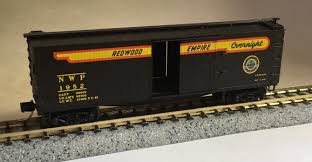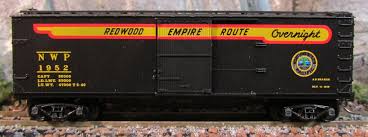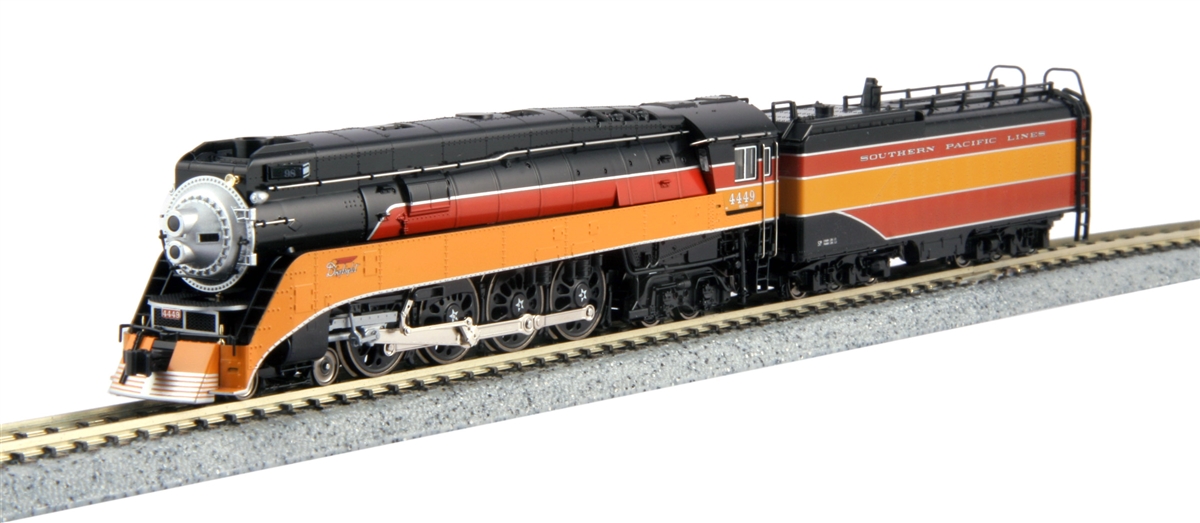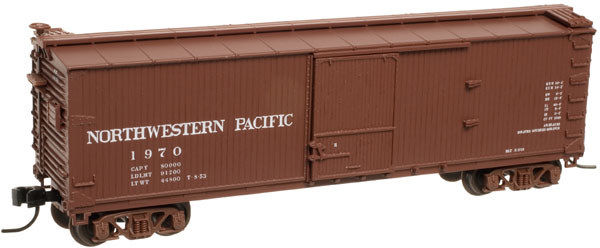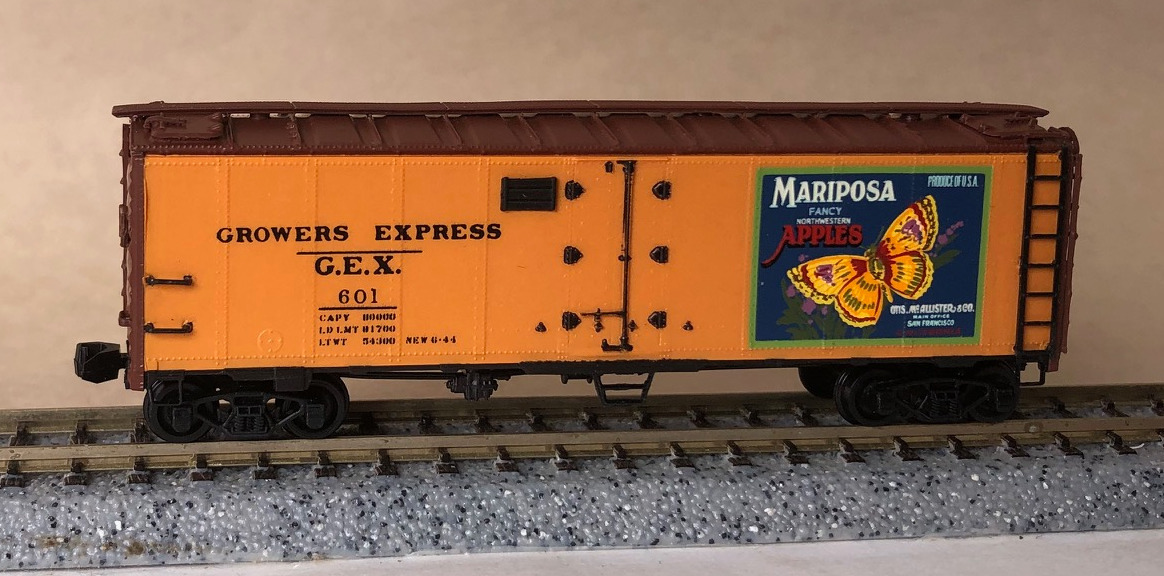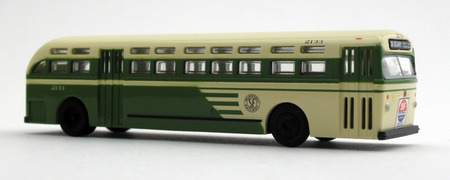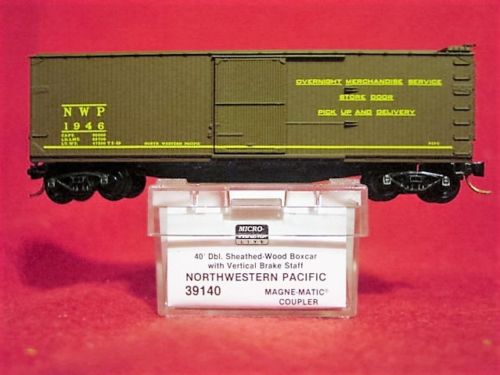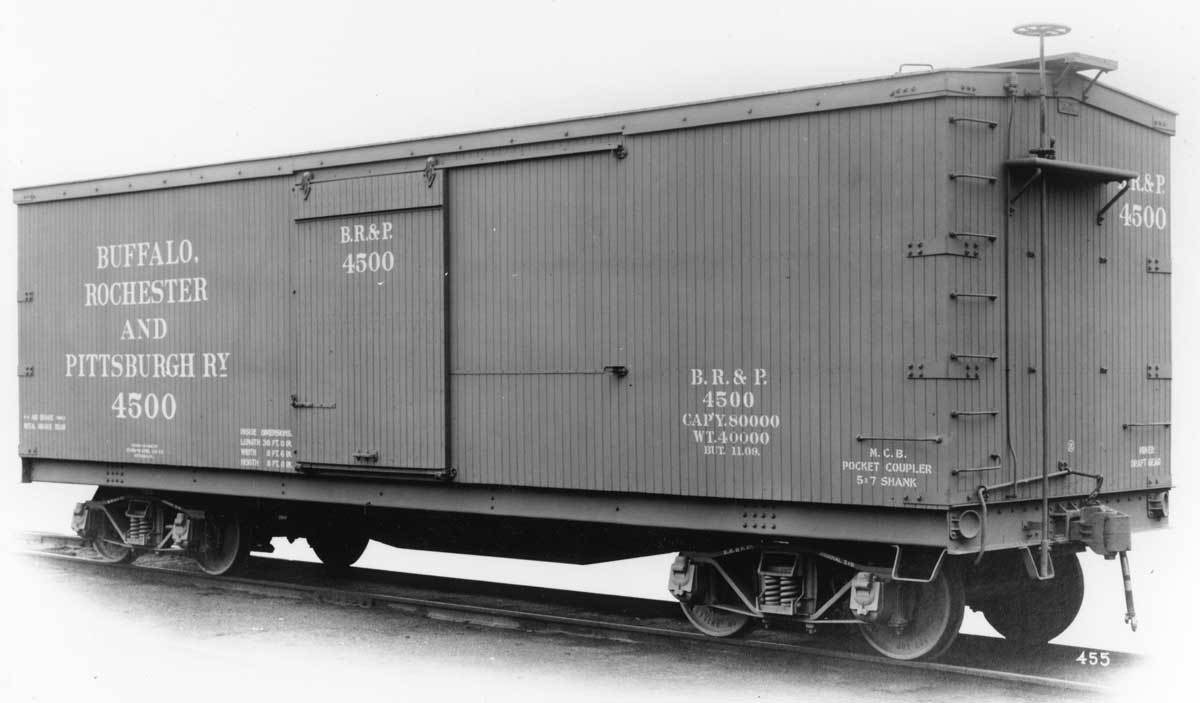Prototype History: Double sheathed all-wood boxcars in 34', 36' or 40' length were built with trussrods into the 1900's. By about 1910-15 cars often were being built of wood but with steel underframes. BTW many early boxcars were only about 8-1/2' high, though taller 10' cars were beginning to be built by the WW1 era (like the USRA wood boxcar) but that didn't become the norm until the late 1930's.
Later in the 20's-30's, some cars were built with double or single sheathed woodsides but steel underframe, roof and ends. In the later 30's into the 40's some older cars built with wood except for the steel underframes were rebuilt with steel ends and roofs. Some of these cars with steel roof and ends (either new or rebuilt) lasted into the 1960's.
During WW2, steel was in short supply, so some new boxcars were built with steel roof and ends, but wood sides. These too sometimes lasted into the "diesel era", although many were rebuilt with steel sides after the war.
Later in the 20's-30's, some cars were built with double or single sheathed woodsides but steel underframe, roof and ends. In the later 30's into the 40's some older cars built with wood except for the steel underframes were rebuilt with steel ends and roofs. Some of these cars with steel roof and ends (either new or rebuilt) lasted into the 1960's.
During WW2, steel was in short supply, so some new boxcars were built with steel roof and ends, but wood sides. These too sometimes lasted into the "diesel era", although many were rebuilt with steel sides after the war.
Road Name History: 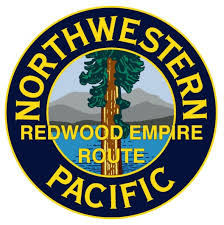 We’ll start with a bit of backstory for this one. By the 1980s, Southern Pacific had run out of patience with their Northwestern Pacific subsidiary which ran from the area north of the San Francisco Bay north to Eureka, California. SP sold the northern half to Eureka Southern and in 1993 leased the southern half to California Northern while selling it a segment at a time to various state agencies. By 1996, the state owned all of the southern segments which were combined under a single agency. They then canceled the lease to California Northern and began operating freight service again between Schellville and Willits under the resurrected name of Northwestern Pacific. GP9’s and SD9’s were painted in a version of SP’s Black Widow scheme with a new NWP logo. The new NWP lost money and washouts and bridge problems that had always plagued the line caused operations to cease in 1998. The line sat idle until 2001 when they attempted to resume service between Schellville and Cotati but the FRA determined that the line wasn’t safe and ordered it closed after just a month. In 2009, the state began rebuilding the line as far as Windsor. Freight trains began running again in 2011 and continue to run today. They are currently rebuilding the line up to San Rafael for use as a new commuter rail operation.
We’ll start with a bit of backstory for this one. By the 1980s, Southern Pacific had run out of patience with their Northwestern Pacific subsidiary which ran from the area north of the San Francisco Bay north to Eureka, California. SP sold the northern half to Eureka Southern and in 1993 leased the southern half to California Northern while selling it a segment at a time to various state agencies. By 1996, the state owned all of the southern segments which were combined under a single agency. They then canceled the lease to California Northern and began operating freight service again between Schellville and Willits under the resurrected name of Northwestern Pacific. GP9’s and SD9’s were painted in a version of SP’s Black Widow scheme with a new NWP logo. The new NWP lost money and washouts and bridge problems that had always plagued the line caused operations to cease in 1998. The line sat idle until 2001 when they attempted to resume service between Schellville and Cotati but the FRA determined that the line wasn’t safe and ordered it closed after just a month. In 2009, the state began rebuilding the line as far as Windsor. Freight trains began running again in 2011 and continue to run today. They are currently rebuilding the line up to San Rafael for use as a new commuter rail operation.

Brand/Importer Information: Micro-Trains is the brand name used by both Kadee Quality Products and Micro-Trains Line. For a history of the relationship between the brand and the two companies, please consult our Micro-Trains Collector's Guide.
Manufacturer Information:  Micro-Trains Line split off from Kadee Quality Products in 1990. Kadee Quality Products originally got involved in N-Scale by producing a scaled-down version of their successful HO Magne-Matic knuckle coupler system. This coupler was superior to the ubiquitous 'Rapido' style coupler due to two primary factors: superior realistic appearance and the ability to automatically uncouple when stopped over a magnet embedded in a section of track. The success of these couplers in N-Scale quickly translated to the production of trucks, wheels and in 1972 a release of ready-to-run box cars.
Micro-Trains Line split off from Kadee Quality Products in 1990. Kadee Quality Products originally got involved in N-Scale by producing a scaled-down version of their successful HO Magne-Matic knuckle coupler system. This coupler was superior to the ubiquitous 'Rapido' style coupler due to two primary factors: superior realistic appearance and the ability to automatically uncouple when stopped over a magnet embedded in a section of track. The success of these couplers in N-Scale quickly translated to the production of trucks, wheels and in 1972 a release of ready-to-run box cars.
Micro-Trains Line Co. split off from Kadee in 1990 to form a completely independent company. For this reason, products from this company can appear with labels from both enterprises. Due to the nature of production idiosyncrasies and various random factors, the rolling stock from Micro-Trains can have all sorts of interesting variations in both their packaging as well as the products themselves. When acquiring an MTL product it is very important to understand these important production variations that can greatly enhance (or decrease) the value of your purchase.
Please consult our Micro-Trains Collector's Guide

Micro-Trains Line Co. split off from Kadee in 1990 to form a completely independent company. For this reason, products from this company can appear with labels from both enterprises. Due to the nature of production idiosyncrasies and various random factors, the rolling stock from Micro-Trains can have all sorts of interesting variations in both their packaging as well as the products themselves. When acquiring an MTL product it is very important to understand these important production variations that can greatly enhance (or decrease) the value of your purchase.
Please consult our Micro-Trains Collector's Guide
Item created by: nscalemodeler160 on 2016-04-10 15:28:46. Last edited by gdm on 2020-05-10 17:32:05
If you see errors or missing data in this entry, please feel free to log in and edit it. Anyone with a Gmail account can log in instantly.
If you see errors or missing data in this entry, please feel free to log in and edit it. Anyone with a Gmail account can log in instantly.


